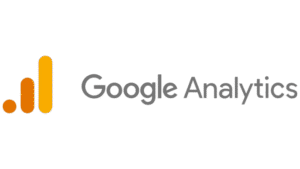Google Analytics is a powerful web analytics tool that helps businesses understand their website’s performance. It tracks visitor behavior, traffic sources, and engagement metrics, providing insights to optimize SEO, marketing campaigns, and user experience. With detailed reports on audience demographics, page views, and conversions, it empowers data-driven decisions to enhance online presence and achieve business goals effectively.
- Overview
- Features
- Pricing
- Pros
- Cons
- Reviews
Google Analytics Overview
- Updated August 30, 2025
Key Features
-
Real-Time Reporting: User activity on the website or app appears instantly. Active users, pages viewed, and traffic sources become visible in real time, giving businesses immediate awareness of trends or campaigns.
-
Audience Insights and Segmentation: Reports display visitor details such as age, gender, location, and interests. Segmentation groups users by behavior or demographics, enabling targeted marketing strategies for specific audiences.
-
Acquisition Reports: Data reveals how users arrive at the site, whether through organic search, paid ads, social media, or referrals. The insights highlight which channels deliver traffic and guide marketing optimization.
-
Behavior Reports: Information shows how users interact with the site, with details such as popular pages, time spent, and bounce rates. The results identify engaging content and areas that require improvement.
-
Conversion Tracking and Goals: Goals measure specific actions such as purchases or form submissions. The feature records completions and pinpoints bottlenecks in the user journey, raising conversion rates.
-
Funnel Analysis: The user journey from first interaction to conversion appears in a clear visualization. Drop-off points emerge at each stage, allowing targeted improvements to the customer journey.
-
Tag Management: Google Tag Manager provides a straightforward method to add tracking codes to a site or app. The user-friendly interface improves data collection and removes the need for manual coding.
-
Data Activation with AI: Machine learning algorithms analyze data and deliver automated insights together with predictive metrics such as churn probability. The results support smarter, data-driven decisions.
-
Customizable Reports and Dashboards: Tailored reports and dashboards emphasize key metrics. Flexibility ensures focus on the data most relevant to specific goals.
-
Cross-Platform Tracking: Google Analytics 4 (GA4) records user behavior across websites, apps, and offline interactions. The unified model delivers a complete perspective of the customer journey.
-
Data Privacy and Consent Mode: Tools ensure compliance with privacy regulations such as GDPR. Consent mode adapts data collection to user preferences, balancing analytics with privacy standards.
-
Integrations with Google Tools: Direct connections exist with Google Ads, Search Console, and BigQuery. These integrations expand campaign tracking and enable deeper levels of analysis.
Price
No cost for standard usage. This version provides basic analytics functionality suitable for small to medium websites and apps.
Pros
Competitor |
Pros of Google Analytics 4 |
|---|---|
| Adobe Analytics | GA4 provides a free option with many essential analytics features, while Adobe Analytics is expensive. GA4 integrates easily with Google Ads and Search Console, supports AI-driven insights, and allows cross-platform tracking in a single platform. |
| Mixpanel | GA4 offers event-based tracking and funnel reports without extra cost, making it accessible for small businesses. It allows tracking across web and mobile apps and integrates seamlessly with other Google services. |
| Matomo | GA4 provides predictive metrics and machine learning insights, along with pre-built dashboards and reports. GA4 handles app and website analytics in one platform, which can be more complex in Matomo. |
| Heap Analytics | GA4 automatically collects standard events and reduces setup time. Integration with BigQuery and Google Ads gives advanced analysis and predictive insights not fully available in Heap’s free plan. |
| Microsoft Clarity | GA4 offers detailed analytics and customizable reports, including funnels, segments, and predictive metrics. Its integration with Google ecosystem makes it stronger than Clarity, which focuses on heatmaps and session recordings only. |
Cons
Competitor |
Cons of Google Analytics 4 |
|---|---|
| Adobe Analytics | GA4 is less customizable for complex enterprise reporting. Its interface can be confusing for beginners, and advanced segmentation is more limited than Adobe Analytics. |
| Mixpanel | GA4’s cohort and retention analysis are less detailed than Mixpanel’s. Setting up custom events can be more technical and less intuitive. |
| Matomo | GA4 stores data in Google cloud, which may raise privacy concerns. Data sampling for large datasets can reduce accuracy, whereas Matomo allows full control on-premises. |
| Heap Analytics | GA4 cannot track retroactive events easily. Free users have limits on the number of event types, and predictive insights may require manual review. |
| Microsoft Clarity | GA4 has a steeper learning curve and fewer visual tools for session replay and heatmaps. Privacy control is also less flexible compared to Clarity. |

